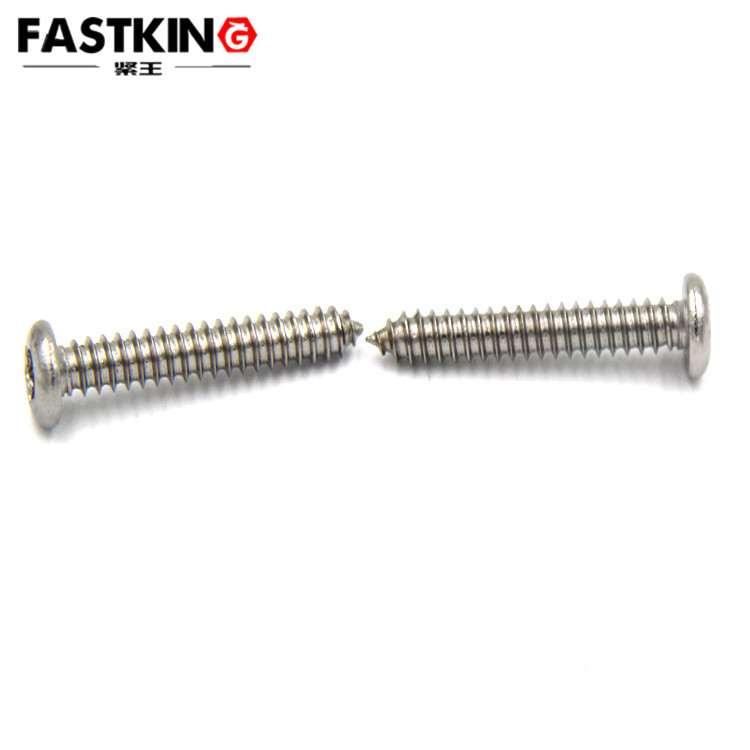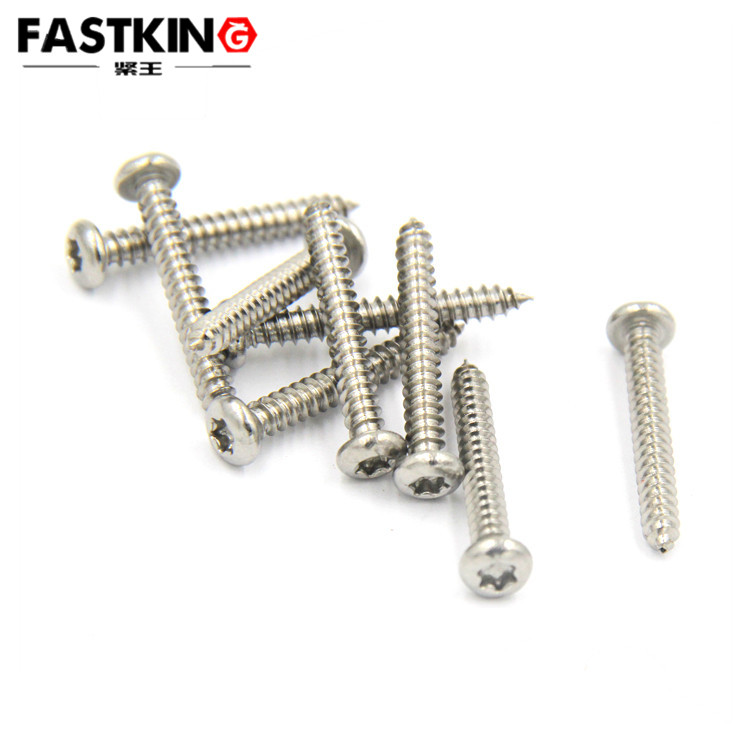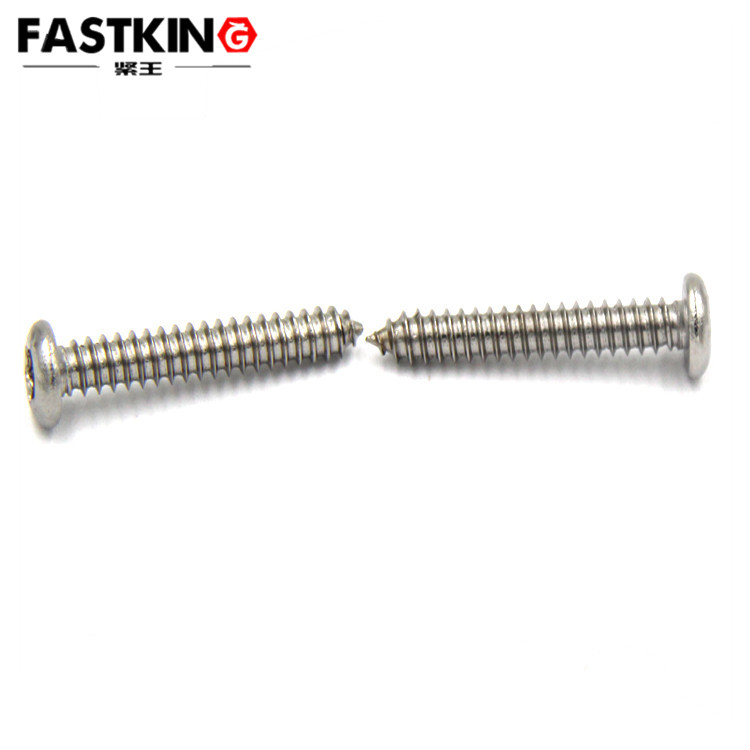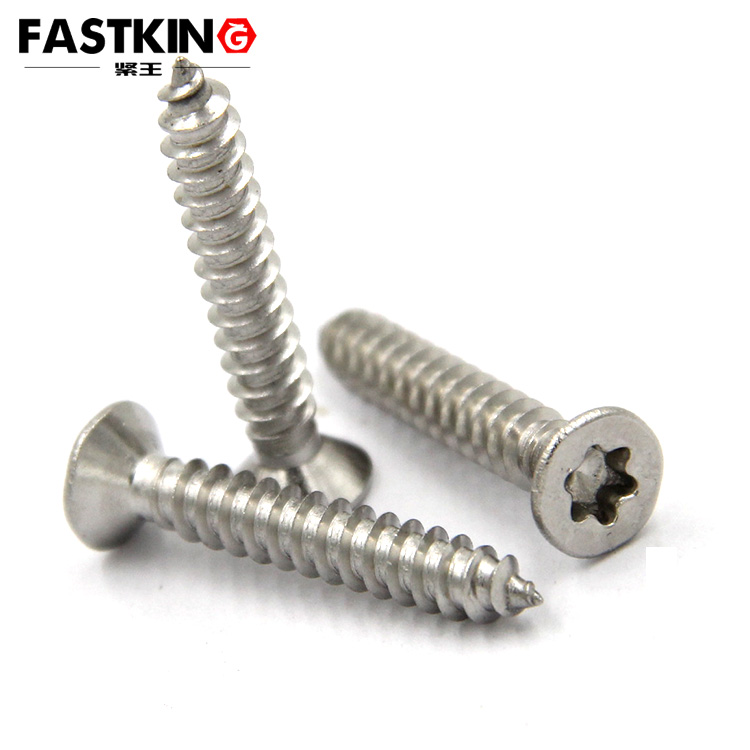Pan head plum blossom self tapping screw gb2670.1
- Product description:Pan head hexagon screw, also referred to as hexagon bolt, cup head screw, hexagon screw, its name is not the same, but the meaning is the same. There are 4.8, 8.8, 10.9 and 12.9 in common use. Also kn
Pan head plum blossom self tapping screw gb2670.1
Material: stainless steel 304316, grade 8.8 high strength and grade 12.9 high strength
Product standard: GB2670.1
It can also support non-standard customization.
GB/T 2670.1-2017 clearly specifies the technical requirements for hexagon socket torx pan head self-tapping screws with thread sizes ranging from ST2.9 to ST6.3, including dimensions, materials, mechanical properties, and surface treatments.
-
Pan Head Design: The head is dome-shaped, which can distribute pressure, protect the surface of the connected component, and prevent scratches.
-
Hexagon Socket Torx Recess (Torx Slot): It fits tightly with special tools, transmits torque more evenly, and has significantly better anti-slip performance than cross-recessed or slotted designs. It is especially suitable for scenarios requiring high torque.
-
Self-Tapping Thread: The thread profile adopts an arc-shaped triangular structure (in compliance with GB/T 5280). The screw tip can be either a flat end (Type F) or a round end (Type R). It can be directly driven into plastic materials (e.g., thin metal sheets, plastics, wood) without pre-drilling.

-
Carbon Steel: Commonly used grades are Grade 4.8 or Grade 8.8. Surface treatments such as zinc plating (Zn) or nickel plating (Ni) are applied to enhance rust resistance, making it suitable for dry indoor environments.
-
Stainless Steel: Materials like 304 (A2-70) or 316 (A4-80) offer strong corrosion resistance and meet food-grade standards. They are often used in humid, outdoor, or hygiene-critical scenarios (e.g., medical equipment, food processing machinery).
-
Surface Treatments: Non-electrolytic zinc flake coating (in compliance with GB/T 5267.2) or passivation treatment (in compliance with GB/T 5267.4) can further improve corrosion resistance.
-
Efficient Installation: The self-tapping function integrates drilling, tapping, and fastening into one step, saving time and costs.
-
Vibration Resistance: The tight fit between the torx slot and the tool, combined with the triangular thread design, ensures the screw remains secure even in high-frequency vibration environments (e.g., automobile engines, motorcycle exhaust pipes).
-
Tamper-Proof and Anti-Theft: The hexagon socket torx recess requires a special tool for operation, preventing unauthorized disassembly. It is suitable for public facilities (e.g., street lamps, charging piles).
-
Automotive Industry: Fixing of engine components, body structures, and interior parts—especially suitable for parts requiring frequent disassembly and assembly.
-
Electronic Equipment: Assembly of laptop motherboards, home appliance casings, and precision instruments. The torx slot design avoids damage to sensitive components.
-
Furniture Manufacturing: Assembly of panel furniture, cabinets, and wooden doors. The pan head design balances aesthetics and fastening force.
-
Architectural Decoration: Fixing of ceiling keels, aluminum profile frames, and curtain walls. Stainless steel materials can withstand complex outdoor environments.
-
Mechanical Manufacturing: Fixing of equipment casings, brackets, and motors. The triangular thread ensures stable connections.
-
Thread Diameter (ST): Select based on the thickness of the connected component. Common sizes include ST2.9, ST3.5, and ST4.2. For example, ST3.5 is suitable for 1.2mm thin steel sheets, and ST4.8 for 3mm wood.
-
Length (l): Ensure that after the screw penetrates the connected component, at least 2–3 complete threads are embedded in the base material to prevent loosening.
-
Head Dimensions: The pan head diameter (d) and height (k) must match the surface of the connected component to avoid excessive protrusion or sinking.
-
Special Torx Wrenches (e.g., T-series): Must strictly match the size of the screw recess (e.g., T15, T20, T25) to prevent thread stripping.
-
Power Tools: Torque-controlled wrenches are preferred to prevent screw breakage or material cracking caused by over-tightening.
-
Perpendicularity Control: Keep the screwdriver perpendicular to the surface of the connected component to avoid thread deflection, which may affect fastening force.
-
Pilot Hole Recommendation: For materials with high hardness (e.g., thick steel sheets or hardwood), pre-drill a pilot hole (with a diameter slightly smaller than the thread minor diameter) to reduce driving resistance and prevent material cracking.
-
Anti-Loosening Measures: In vibration environments, use spring washers or thread-locking adhesives to enhance connection reliability.
-
Thread Characteristics: Machine screws require pre-tapped internal threads (marked as M*), while self-tapping screws are directly driven into materials (marked as ST*).
-
Application Scenarios: Machine screws are suitable for high-strength metal connections, while self-tapping screws are more suitable for low-strength materials such as thin sheets and plastics.
-
Driving Method: The hexagon socket torx recess has better anti-slip performance and is suitable for high-torque requirements; cross-recessed designs have strong versatility but are prone to wear.
-
Application Fields: Hexagon socket torx screws are mostly used in precision equipment or scenarios requiring tamper resistance; cross-recessed screws are more common in general household or light industry applications.
-
Head Shape: Countersunk heads are fully embedded in the surface of the connected component, suitable for decorative scenarios with strict flatness requirements; pan heads protrude slightly from the surface, suitable for parts requiring frequent disassembly or high load-bearing capacity.
A complete mark includes the standard number, thread size, length, material, and surface treatment. Example:
Self-Tapping Screw GB/T 2670.1 ST3.5×16 A4-80 Passivation
-
ST3.5: Thread size (nominal diameter 3.5mm)
-
16: Nominal length 16mm
-
A4-80: 316 stainless steel material, performance grade 80
-
Passivation: Surface treatment method
-
Dimensional Inspection: Use vernier calipers or micrometers to measure parameters such as head diameter and thread length, which must meet the requirements specified in Table 1 of GB/T 2670.1-2017.
-
Mechanical Performance Testing: Verify tensile strength and driving torque using torque testers or tensile testing machines, which must comply with GB/T 3098.5.
-
Salt Spray Test: Stainless steel screws must pass a salt spray test (5% NaCl solution) for at least 48 hours; carbon steel zinc-plated screws are recommended to pass a 24-hour test.

-
Self-Tapping bolts: Strictly speaking, bolts must be used with nuts, while self-tapping screws do not require nuts and are directly driven into materials. The "pan head hexagon socket torx self-tapping bolt" mentioned by the user is actually a "pan head hexagon socket torx self-tapping screw".
-
Torx Machine Screws: If machined-thread screws (machine screws) are required, select hexagon socket torx pan head machine screws (non-self-tapping type) in compliance with GB/T 2672.
The EU RoHS Directive restricts hazardous substances such as lead and mercury. When selecting screws, ensure that the material and surface treatment meet relevant standards—especially for products intended for export.
Prevent screws from getting damp or contacting corrosive substances. Sealed packaging is recommended, and screws should be stored in a dry environment. During transportation, avoid crushing deformation to ensure thread integrity.




